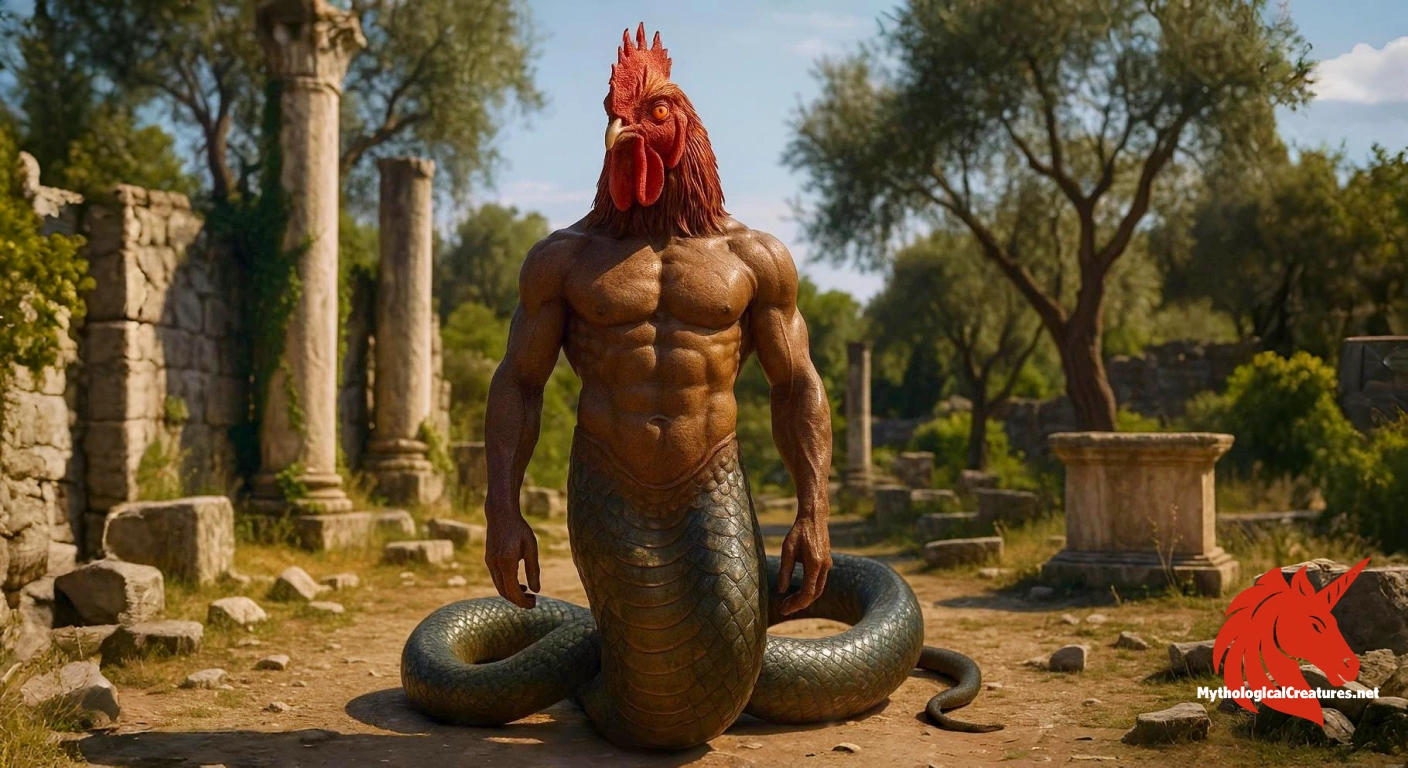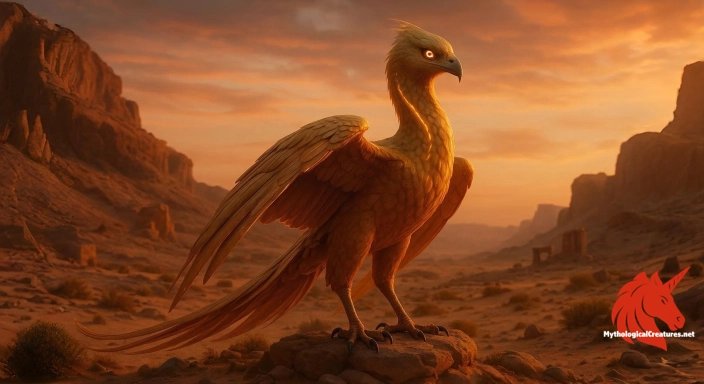Anguiped: Anguipeds are divine entities characterized by their unusual composite form, most notably having serpents for legs.

Anguiped
Anguiped - The Anguiped represents the fusion of pagan and Judaic elements and served as a protective, mystical emblem in ancient religious practices.
Origins & First Encounters
The Anguiped emerges as a fascinating figure from antiquity, its name evoking the union of serpentine vitality with terrestrial power. Its origins, rooted in the Greco-Roman milieu and influenced by Persian symbolism, are reflected in its unusual depiction on magical amulets. The creature’s design, where traditional legs are replaced with writhing snakes, tells a story of divine hybridity and transformative magic. Early attestations of this being appear on artefacts that capture the era’s syncretic mix of pagan and Judaic elements. This enigmatic divinity is often identified with Abraxas, whose image combines the head of a rooster with serpentine limbs. The interplay of animalistic and celestial features lent the Anguiped a powerful protective function in ancient magic. Its cultural setting reflects a time when varied religious beliefs blended into complex mythic narratives that challenged conventional divinity. The detailed iconography of such amulets provided both aesthetic pleasure and a means to engage with the mysterious forces of the supernatural. Over time, this creature has embodied the dynamic tensions between orthodox practices and heterodox mystical pursuits.
Source Texts & Tale Variants
Ancient magical amulets, curse tablets, and mystical papyri serve as primary sources that document the Anguiped’s presence in the Greco-Roman world. In these artefacts, inscriptions such as Iao interlace Judaic mysticism with pagan magical traditions in a compelling fusion. Varied texts and iconographic records depict the creature as a potent symbol used to invoke protection and channel divine energies. Multiple narrative variants emerge, with some sources presenting the Anguiped as a mere amuletic emblem while others assign it a quasi-divine persona. Artistic fragments further reveal that its imagery has been adapted to represent both protective spirits and cosmic adversaries. The layering of magical symbols, such as the Tetragrammaton, demonstrates the complexity of its ritual significance. Manuscripts and curse tablets across the Mediterranean illustrate how its depiction evolved during periods of cultural flux. Distinct versions appear in magical papyri where its hybrid form is dissected and reassembled into elaborate spellwork. Together, these diverse sources illuminate a rich and multifaceted tradition that continues to intrigue modern scholars.
Form & Powers
The physical form of the Anguiped is strikingly unconventional, with its defining characteristic being a set of serpentine legs that seem to slither with an unearthly animation. Its most prominent incarnation, as seen in depictions of Abraxas, features a head resembling that of a rooster, complete with a sharp beak and intense, watchful eyes. The torso is often portrayed as robust yet intricately adorned with mystical symbols that hint at its divine heritage. The sinuous snake limbs display a dazzling array of scales and may vary in colour from deep greens to metallic hues, emphasising their kinetic energy and power. Artisans of antiquity meticulously rendered every twisting coil to reflect both beauty and the unpredictable nature of magic. Subtle variations in size and posture across different artefacts reflect regional artistic liberties while maintaining the creature’s core symbolic traits. Each element of its anatomy is imbued with a sense of purpose, as if designed to bridge the gap between mortal realms and divine mysteries. The blend of avian and reptilian features gives the Anguiped an aura of primal mystery that has captivated viewers and practitioners alike. Altogether, its physical portrayal stands as a masterful convergence of art, symbolism, and ancient belief systems.
Regional Faces
Across various regions of the ancient world, the depiction of the Anguiped has been adapted to reflect local cultural nuances and religious sensibilities. In the heart of the Greco-Roman environment, it is primarily celebrated as an amuletic guardian with potent magical properties. In the Eastern Mediterranean and areas influenced by Persian traditions, additional layers of symbolism, such as fertility and cosmic balance, are naturally woven into its imagery. Roman Germany and eastern Gaul contributed distinct interpretations, often showing the creature as a vanquished enemy beneath the thundering hooves of an equestrian Jupiter. Such depictions underline how regional aesthetics shaped its role in mythic battles and divine narratives. Local artisans frequently modified elements such as posture, scale, and ornamental motifs to embody indigenous spiritual perspectives. This regional diversity is a testimony to the creature’s adaptability and enduring appeal across disparate cultures. Variations in its narrative—ranging from a fearsome adversary to a mystical protector—demonstrate how the Anguiped was recontextualised to suit local traditions. The multifaceted representations across different regions have allowed the Anguiped to transcend its original boundaries and integrate into a broader mythological tapestry.
Cultural Parallels
The Anguiped shares compelling similarities with several other mythological hybrids, forging cultural parallels that underscore a universal fascination with the union of disparate elements. Its serpentine legs invite comparisons with the Hydra of Greek lore and with other reptilian entities found across diverse traditions. The unique combination of a rooster-like head and snake-like limbs echoes motifs seen in other chimeric beings that merge avian and reptilian attributes to forge potent symbols of renewal and chaos. Analogous to the mythic giants and titanic figures in Near Eastern and cosmic narratives, the Anguiped is often portrayed as a mediator between orderly creation and unbridled chaos. In various cultural contexts, similar hybrid forms serve as liminal figures that traverse the boundaries between mortal existence and divine realms. This intersection of animalistic features and spiritual authority is mirrored in figures like the griffin and the phoenix, whose images evoke transcendence and metamorphosis. The recurring use of serpentine imagery across many mythologies reflects a shared human preoccupation with transformation and the unpredictable forces of nature. Comparative analysis with Persian deities and Judaic mysticism further illustrates how the Anguiped resonates with a broader cultural heritage steeped in symbolism. Such cross-cultural connections reinforce the notion that the creature is not an isolated oddity but part of a wider mythological tradition that spans continents and epochs.
Legacy & Modern Evolution
The evolution of the Anguiped’s image mirrors the shifting landscapes of cultural and spiritual thought from antiquity to the modern era. In the ancient world, its presence on amulets and talismans underscored a practical reliance on mysticism to secure divine favour and ward off misfortune. As centuries progressed, its imagery was reinterpreted by medieval artisans, often taking on more obscure or allegorical meanings that reflected the complexities of evolving esoteric traditions. During the Renaissance, there was a revival of interest in classical hybridity as occult and mystical philosophies experienced a resurgence in public imagination. In contemporary culture, the Anguiped has found new life in modern art, literature, and fantasy role-playing games, where its enigmatic form symbolizes the intersection of myth and the supernatural. It continues to inspire jewellery and decorative artefacts that hark back to its ancient roots, offering wearers a connection to a long line of mystical tradition. Scholars and enthusiasts alike explore its iconography as a dynamic example of cultural syncretism that transcends rigid historical boundaries. The enduring popularity of the Anguiped stands as testament to its ability to evolve while retaining a core mystique. Today, this ancient hybrid continues to fascinate and capture the wonder of audiences worldwide, serving as a bridge between the mythic past and speculative modernity.
Interesting Fact
A notable aspect of the Anguiped is its recurring presence across diverse regions of the Greco-Roman world, reflecting its role as a versatile symbol in both art and religious syncretism.
Quick Creature Info
Associations:
Our Mythic Legendary Rating:

Also Sometimes Known As:
Supernatural Powers:
Physical Attributes:
Abilities:
Lore:
Related Creatures, Tales or Lore
- AAbraxas
- TTyphon
- GGiants
References
Discover Another Mythical Legend You May Not Have Heard Of?
Uncover the mysteries of ancient folklore and expand your knowledge of legendary beings from cultures around the world.
Dare to Meet the Anqa....
Curated by the Mythological Creatures Team (rev. May 2025)
